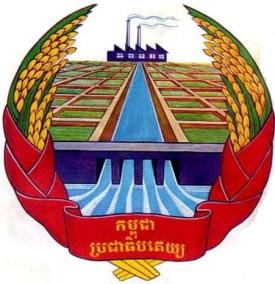The Missing Picture Film Difficulty Ranking: 4

Have you heard of Pol Pot and the Khmer Rouge?
- If you have, great, watch this film to understand how they changed Cambodian society.
- If you haven’t, no problem, watch this film to learn who/what they were and how they revolutionised a country on film and destroyed it in reality.
Why Watch The Missing Picture?
- To learn about life in Cambodia in the 1970s before and after Pol Pot and the Khmer Rouge came to power
- To imagine a country where your only possession was a spoon
- Learn about a country where artists were prohibited – the only images left are of a myth created by Pol Pot and his regime
- Clay figures!
The Breakdown
The Missing Picture starts in a darkish room full of stacks of film rolls. The floor is covered with film strips. Someone picks up one of the film strips and looks at the still images it contains. It shows a Cambodian woman dancing in traditional dress. This Cambodia, traditional Cambodia, was left to be forgotten by the Khmer Rouge so they could forge a new country.
 The Khmer Rouge created a new country by creating a new mythology. Art and tradition was thrown to the side. Now “the spade is your pen, and the rice field is your paper”. The picture on the right shows the Khmer Rouge’s utopia. There is a factory, irrigation, corn harvest, and rice fields but no people. This is Pol Pot’s vision for a state driven by work and void of culture.
The Khmer Rouge created a new country by creating a new mythology. Art and tradition was thrown to the side. Now “the spade is your pen, and the rice field is your paper”. The picture on the right shows the Khmer Rouge’s utopia. There is a factory, irrigation, corn harvest, and rice fields but no people. This is Pol Pot’s vision for a state driven by work and void of culture.
The clay figures represent many things. As they are motionless, they represent the death: death of the past and death of the many Cambodians that died during under the Khmer Rouge. The clay figures also represent ‘the missing picture’ ie. everything that was not documented by the Khmer Rouge on film. As the Khmer Rouge only documented films of people working the rice fields, the clay figures end up recreating a lot of undocumented life. They re-enact the famine, death, and forced labour that the Khmer Rouge did not document. This is the untold story of Cambodia under the Khmer Rouge.
Conclusion
The Missing Picture allows us to recreate a more accurate history of Cambodia under the Khmer Rouge. It shows us the real footage shot by the Khmer Rouge and adds in ‘missing’ scenes of famine and death that the Khmer Rouge ignored. As a result, this film importantly documents the horrific events that the Khmer Rouge tried to absolve from history. If you’re after a true documentary of the Khmer Rouge – this is as close as you can get.
For another great South East Asian documentary, I strongly recommend watching The Look of Silence (available on Netflix).





You must be logged in to post a comment.